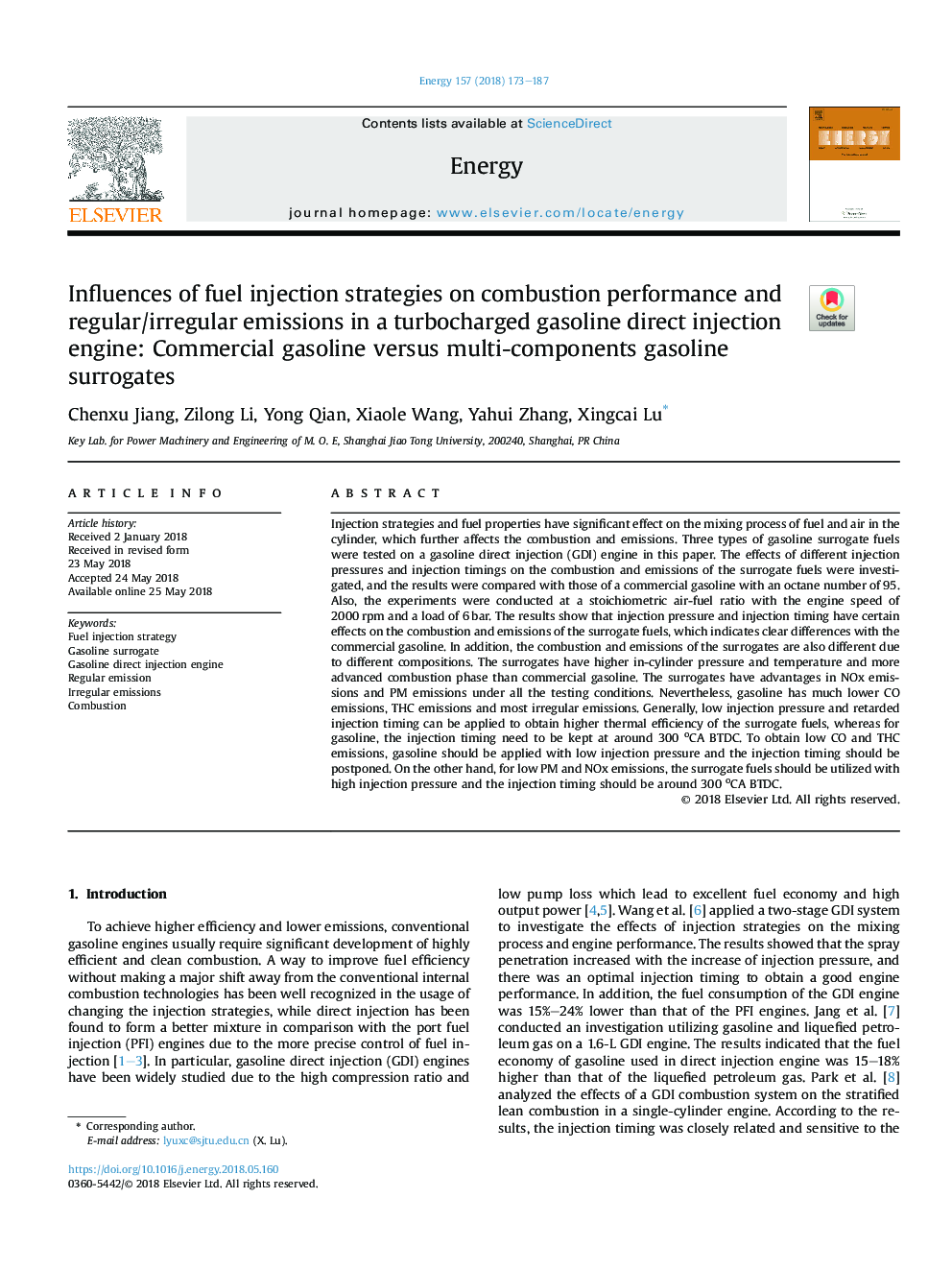| کد مقاله | کد نشریه | سال انتشار | مقاله انگلیسی | نسخه تمام متن |
|---|---|---|---|---|
| 8071210 | 1521393 | 2018 | 15 صفحه PDF | دانلود رایگان |
عنوان انگلیسی مقاله ISI
Influences of fuel injection strategies on combustion performance and regular/irregular emissions in a turbocharged gasoline direct injection engine: Commercial gasoline versus multi-components gasoline surrogates
ترجمه فارسی عنوان
تاثیرات استراتژی تزریق سوخت در عملکرد احتراق و انتشار منظم / نامنظم در یک موتور تزریق مستقیم بنزینی توربوشارژ: بنزین تجاری در مقایسه با اجزای مختلف بنزین
دانلود مقاله + سفارش ترجمه
دانلود مقاله ISI انگلیسی
رایگان برای ایرانیان
کلمات کلیدی
استراتژی تزریق سوخت، جایگزینی بنزین، موتور تزریق مستقیم بنزین، انتشار عادی، انتشار نامنظم، احتراق
موضوعات مرتبط
مهندسی و علوم پایه
مهندسی انرژی
انرژی (عمومی)
چکیده انگلیسی
Injection strategies and fuel properties have significant effect on the mixing process of fuel and air in the cylinder, which further affects the combustion and emissions. Three types of gasoline surrogate fuels were tested on a gasoline direct injection (GDI) engine in this paper. The effects of different injection pressures and injection timings on the combustion and emissions of the surrogate fuels were investigated, and the results were compared with those of a commercial gasoline with an octane number of 95. Also, the experiments were conducted at a stoichiometric air-fuel ratio with the engine speed of 2000â¯rpm and a load of 6â¯bar. The results show that injection pressure and injection timing have certain effects on the combustion and emissions of the surrogate fuels, which indicates clear differences with the commercial gasoline. In addition, the combustion and emissions of the surrogates are also different due to different compositions. The surrogates have higher in-cylinder pressure and temperature and more advanced combustion phase than commercial gasoline. The surrogates have advantages in NOx emissions and PM emissions under all the testing conditions. Nevertheless, gasoline has much lower CO emissions, THC emissions and most irregular emissions. Generally, low injection pressure and retarded injection timing can be applied to obtain higher thermal efficiency of the surrogate fuels, whereas for gasoline, the injection timing need to be kept at around 300 oCA BTDC. To obtain low CO and THC emissions, gasoline should be applied with low injection pressure and the injection timing should be postponed. On the other hand, for low PM and NOx emissions, the surrogate fuels should be utilized with high injection pressure and the injection timing should be around 300 oCA BTDC.
ناشر
Database: Elsevier - ScienceDirect (ساینس دایرکت)
Journal: Energy - Volume 157, 15 August 2018, Pages 173-187
Journal: Energy - Volume 157, 15 August 2018, Pages 173-187
نویسندگان
Chenxu Jiang, Zilong Li, Yong Qian, Xiaole Wang, Yahui Zhang, Xingcai Lu,
